Egyptian Temple Ritual
During the time of Amenhotep
III , approximately 3300 years ago
|
|
|
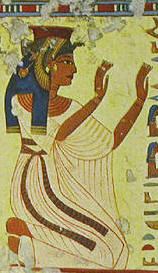
Body erect, still kneeling, hands bent back as
before but at an angle of 90 degrees.
Az a gam
look upon my offering
4. Hands flat as before, horizontal, but both pointing to the right.
see netee
here are two vases (gifts) : lit. "Come vases [plural]"
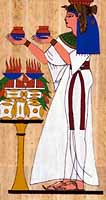

5.Arms flung heavenwards with hands straight out:
vaka zoom!
grant a blessing lit. Loose a blessing
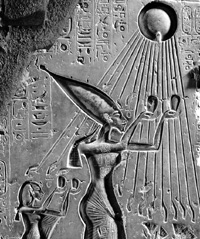
6. Body erect, still kneeling, hands bent back as
before but at an angle of 90 degrees
zama ad eiran fees
she, vola, has brought burning incense" lit. Incense, burning, prepared she brings.
7. Head bent, hands half forward, cup-shaped
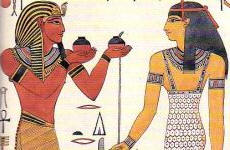
Segoona deen
and this perfume"lit. perfume this
8. Head truned to the left, hands cup-shaped but resting against the body, palms up, with the palm of the right hand holding the back of the left hand, a gesture of completion and repose:
Zan na goos-tee eiran feen
accept these her offerings brought: lit Salute these her baskets of tribute made to bring.
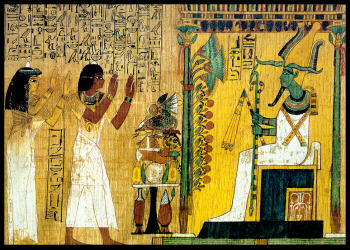
A temple maiden would be a cup-bearer, tend to the lamps and arrange the vestments. She would also take part in the services and ceremonies. Here is an actual account, taken verbatim from a woman regressed to a lifetime in Egypt 3300 years ago:
"I am holding in each hand a sort of lamp with a pedestal
about a yard long. It is of wide, saucer-shape, with a white flame coming out at
the top. They are intended to fit into sockets with a metal ring, one on either
side of a curtain which conceals a central doorway at the end of a large hall.
It is the entrance to a hidden sanctuary, with rounded steps leading up to the
centre. The lights were intended to keep away evil spirits, and the incense to
keep pure the sanctuary itself.
Within there is an altar, in the centre of which burns an everlasting blue flame, very small, but it seems to come out of the stone. It never goes out, and yet it is never tended. I wonder not if it was some kind of mineral light, for it was a pale, greeny-blue, cold flame which id not flicker; no bigger than the light of a candle, and it seemed to come up out of a tiny aperture in the stone. There was some significance between this flame and the decision of the god to whom requests were made. When the god refused the request, or was silent, the flame gave no white light, But when the request was granted the flame showed it accordingly. "
The festival of Amoon-Ra- "the most important festival of the year...for he was the most powerful of the Gods; the most feared, and yet one from whom the greatest blessing was sought and hoped for.
 The great Farong (house of life
= Pharoh) is in this procession. I can see bulls with
long, smooth horns, garlanded with flowers. I was a cup bearer in this service."
The great Farong (house of life
= Pharoh) is in this procession. I can see bulls with
long, smooth horns, garlanded with flowers. I was a cup bearer in this service."
Other Temple Gestures
Hands outstretched in curves, palms upwards head uplifted
Head lowered in humility, swaying slightly from side to side with movements symbolic of unworthiness
Hands drawn in , palms downwards, fingers extended- lateral gesticulation as in protesting unworthiness
Head raised again to heaven, arms flung upward in adoration and entreaty
Repeat: Head lowered in humility,
swaying slightly from side to side with movements symbolic of unworthiness,
hands and arms showing contrition
Head erect, arms forward in mute appeal
Head on table (or floor, if standing) face down- silent meditation, head resting in hands.
| The god, in the form of a statue, was housed in a shrine, the naos,
which was built of stone or wood and was located in the innermost
chamber of the temple. The statue could be made of stone, gold or gilded
wood, inlaid with semi-precious stones. Often it was less than lifesized.
It was not regarded as an idol, but as the receptacle of the deity´s ka. Receiving a blessing from Amun-ra
|